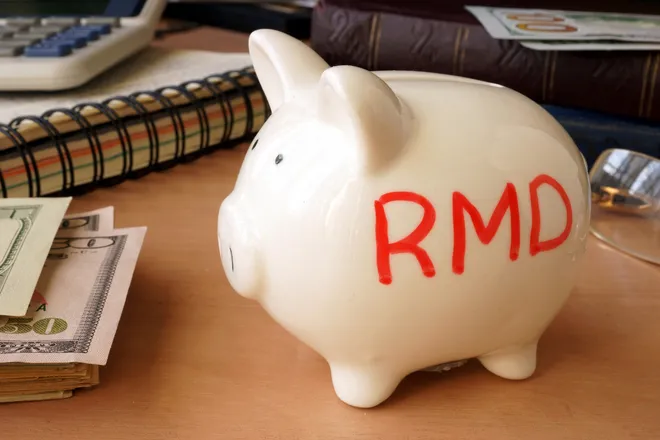3 New Required Minimum Distribution (RMD) Rules Everyone Should Know For 2024
One of the biggest benefits of saving in traditional retirement accounts like a 401(k) or IRA is the upfront tax break you receive. You won't owe any income taxes on contributions in the year you make them. That can give you extra cash now, enabling you to save more for retirement.
But you can't defer those income taxes forever. Eventually, Uncle Sam wants his cut. That's why the IRS imposes required minimum distributions, or RMDs. As the name implies, account holders subject to RMDs are required to withdraw a certain amount of money from their accounts. RMDs apply to anyone age 73 or older and may apply to inherited IRAs as well, regardless of the account holder's age.
See:What if you could choose how to use your 401(k) match? One company's trying that.
The penalty for missing an RMD can be quite steep -- up to 25% of the amount you were supposed to withdraw -- and you'll still have to make the distribution and pay the income taxes on top of that. So, you don't want to miss making an RMD on time (usually by Dec. 31 of every year).
Unfortunately, the rules are always changing, so making sure you're following the most recent rule changes is paramount to ensuring you don't end up owing a big penalty to Uncle Sam. Here are three newly updated RMD rules everyone needs to know before the end of 2024.

Roth 401(k)s are now exempt from RMDs
Just as important as taking your full RMD on time may be avoiding withdrawing funds from a tax-protected account unnecessarily. That's why every retiree needs to know that Roth 401(k)s are now exempt from RMDs following the passage of the Secure 2.0 Act.
Avoiding RMDs in a Roth 401(k) used to require rolling over the funds from a Roth 401(k) to a Roth IRA, which don't have required minimum distributions. However, that process could result in investors losing access to certain investment options they liked in their 401(k).
An additional challenge could arise for anyone who never opened a Roth IRA before. Opening a new Roth IRA and rolling over funds into it makes them subject to the five-year rule. Any earnings on your investments are locked up for five years from the year you open your first Roth IRA if you want to avoid taxes and penalties. As a result, retirees could end up with less access to their retirement savings.
The new rule solves that headache, putting the Roth 401(k) on equal footing with the Roth IRA.
Inherited IRA owners might not have to take a distribution this year
The Secure Act made some big changes to inherited IRAs. Instead of being able to stretch out withdrawals across your lifespan, called a stretch IRA, most beneficiaries now have to distribute the entire account within 10 years of the inheritance. If the original account holder was already subject to required minimum distributions, the beneficiary must continue making annual RMDs as well.
If you inherited an IRA before Dec. 31, 2019, you can still execute the stretch IRA. You will have to make a required minimum distribution this year as a result.
The new rule applies to anyone who inherited an IRA from someone who passed away after Dec. 31, 2019. There are exceptions for spouses, children under the age of 21, individuals with disabilities, and beneficiaries less than 10 years younger than the original owner.
More:IRS raises 401(k) contribution limits, adds super catch-up for 60-63 year olds in 2025
Due to some confusion over the rule changes as they were written in the Secure Act, the IRS waived the RMD requirement for newer beneficiaries for 2021 through 2024 (the Cares Act waived RMDs for everyone in 2020). So, if you inherited an IRA from someone after Dec. 31, 2019, you don't have to take a distribution this year, even if the original owner was subject to RMDs.
However, beneficiaries will have to start taking RMDs in 2025, according to a ruling published by the IRS this year. They will also still need to distribute the entire account within 10 years of inheriting it. As such, it might make sense to take a distribution this year anyway, unless you expect a drop-off in your personal earnings (and tax rate) before the 10-year deadline expires.
Lower your RMD by up to $105,000 with a charitable distribution
One of the best ways for retirees to donate to nonprofits is by using a qualified charitable distribution, or QCD. A QCD allows you to make a distribution directly from an IRA to a qualified nonprofit, and the good news is a QCD counts toward your RMD. The IRS increased the limit for QCDs in 2024 to $105,000, up from $100,000 previously.
Note that this rule only applies to IRAs. Any savings in a defined contribution plan like a 401(k) is still subject to RMDs. And you cannot make a distribution from an IRA and have it count toward the RMD requirements for your 401(k).

Distributing funds directly from your IRA to charity offers a big financial advantage. The distribution never shows up as gross income like a regular distribution would. While you could make a distribution and then donate to charity for the tax deduction, you'd have to itemize your deductions to get the tax break.
A QCD allows you to donate to charity and take the standard deduction without missing out on the tax advantages. That can result in lower income taxes, reduce the percentage of Social Security income subject to taxes, and reduce your Medicare premiums.
You can start making qualified charitable distributions at age 70 1/2, well before RMDs start. Even if you donate less than the $105,000 limit, they can be a great way for the charitably inclined to reduce their RMDs and keep their taxes low.
The Motley Fool has a disclosure policy.
The Motley Fool is a USA TODAY content partner offering financial news, analysis and commentary designed to help people take control of their financial lives. Its content is produced independently of USA TODAY.
The $22,924 Social Security bonus most retirees completely overlook
Offer from the Motley Fool: If you're like most Americans, you're a few years (or more) behind on your retirement savings. But a handful of little-known "Social Security secrets" could help ensure a boost in your retirement income. For example: one easy trick could pay you as much as $22,924 more... each year! Once you learn how to maximize your Social Security benefits, we think you could retire confidently with the peace of mind we're all after. Simply click here to discover how to learn more about these strategies.
View the "Social Security secrets" »
Disclaimer: The copyright of this article belongs to the original author. Reposting this article is solely for the purpose of information dissemination and does not constitute any investment advice. If there is any infringement, please contact us immediately. We will make corrections or deletions as necessary. Thank you.







